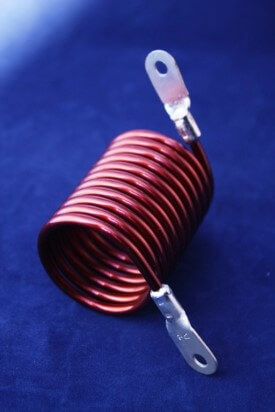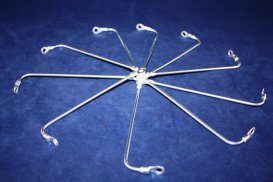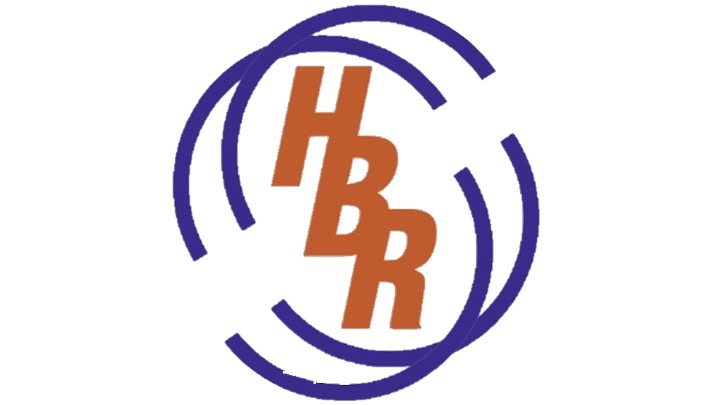
Custom Coil Winding from HBR Industries,Inc.

Custom Coil Bending from HBR Industries,Inc.
Custom Wire Winding & Wire Bending
Wire Bending and wire winding are processes used in the production of creating electromagnetic coils and coil-assemblies. Wound wire coil-assemblies are well-suited for many different kinds of RF and induction applications that require transfer and admission of electrical-energy. They are often used as circuit components and create the magnetic fields required to run the motors and generators within different sized devices.
Custom Prototypes for Wire Bending & Wire Winding
HBR Industries, Inc. works from your existing design/ blue print to create custom wire coils to meet your exact standards. Our proven techniques make tight tolerances, non-standard winds, tight radii, short overall lengths, precise pitches and diameters achievable with precision. Whether your custom wire-coil requires just a few turns or a few thousand, we have the expertise to deliver.

Since 1979, HBR has made an art out of knowing that wire-winding and bending requires extreme precision. HBR has the expertise to determine whether a design can be achieved with the dimensions specified. When reviewing your design along with other coil-project specifications such as number of turns, pitch, diameter, etc., we can make recommendations on the material choice or coil tightness to produce the best results. Our vast experience working with wires has brought us the opportunities to work on some odd, non-standard shapes and a wide variety of other unique characteristics.

Explore our photo gallery to see examples of custom wire coils, wire bending and wire winding projects completed for customers across all industries. Request a quote on a custom wire coil project, or contact HBR for more information.
Wire Winding Materials & Coatings
The wire or conductor which forms the coil is called the winding. Each loop of wire is called a turn. In windings where the turns touch, the wire must be insulated with a coating of nonconductive insulation such as plastic or enamel to prevent the current from passing between the wire turns.
We work with both bare and coated wires based on your needs. Our specialties include custom wire coils by wire winding and wire bending with both, bare copper AWG 2-42 wire gauge and coated copper AWG 2-42 wire gauge. The thinner wires are typically bent on Toroid or plastic bobbins, depending on your design and application. The thicker wires are can also be used to create air coils or stand-alone coils.
Current Frequency Options for Coil Bending & Winding
Wire coils are classified by the frequency of the current they are designed to operate with. These frequencies include:
- Direct current or DC coils or electromagnets operate with a steady direct current in their windings
- Audio-frequency or AF coils, inductors or transformers operate with alternating currents in the audio frequency range, less than 20 kHz
- Radio-frequency or RF coils, inductors or transformers operate with alternating currents in the radio frequency range, above 20 kHz
Our manufacturing expertise enables us to provide custom wire bending & wire winding that exceeds the normal standard quality. With our in-house fixturing capabilities and strategic partnerships with area machine shops and many vendors, we can manufacture the high precision custom wire coils or wire bends based on your exact specifications.
Custom Electromagnetic Coils
Electromagnetic coils provide inductance to an electric circuit. An electromgnetic coil consists of two distinct elements, a conductor and a core. The conductor is usually made from copper wire that wraps around the core. A core depending on it coils purpose is generally either plastic bobbin or magnetic toroid, both in various sizes. One cycle around the core is called a turn. When the wire is turned multiple times, it becomes a coil.
What Is the Correct American Wire Gauge (AWG) for Your Project?
Wire diameter is a principal factor for determining your finished coil’s current-carrying capacity. Always use a guide to calculate the gauge needed to meet your design’s energy or electricity output requirements.
HBR uses the American Wire Gauge (AWG) chart as the guideline for all wire coiling and bending projects. AWG, also known as the Brown & Sharpe wire gauge, is a standardized winding wire gauge chart system used for the diameters of round, solid, nonferrous, electrically conducting wire. This chart serves as a useful tool for selecting a wire gauge.
Some essential aspects of the AWG coil gauge chart include:
- Increasing gauge numbers denote decreasing wire diameters
- The AWG tables are for a single, solid, or round conductor.
- When the cross-sectional area of a wire is doubled, the AWG will decrease by 3. This doubles the ampacity.
- When the diameter of a wire doubles, the AWG will decrease by 6. This quadruples the cross-sectional area and the ampacity.
- A decrease of ten-gauge number reduces the electrical resistance and increases the conductance by a factor of approximately 10.
- For the same cross-section, aluminum wire has a conductivity of approximately 61% of copper, so an aluminum wire has nearly the same resistance as a copper wire 2 AWG sizes smaller, which has 62.9% of the area.
The shared AWG winding wire gauge chart below is based off bare-no film wires. We also create wire coils and shapes using coated wire. Contact us to find out more.
Full Wire Gauge Chart ( AWG Gauge) Diameter in Inches and MM)
Custom Wire Winding & Prototype Services
At HBR Industries, Inc., we do more than just standard production runs. We also use wire bending and wire winding to create prototype parts and components to test fit, form, and function, along with one-off pieces for your specialized application.
Our custom expertise in winding and bending wire provides almost unlimited possibilities. Request a quote on the custom coil products you need, or contact us to learn more.


